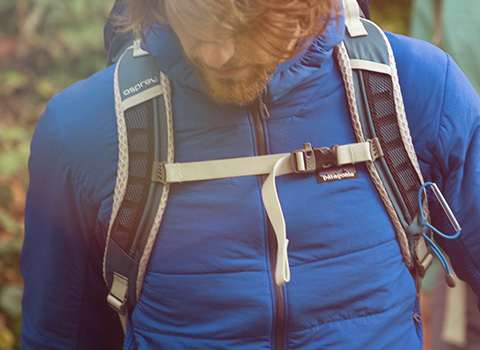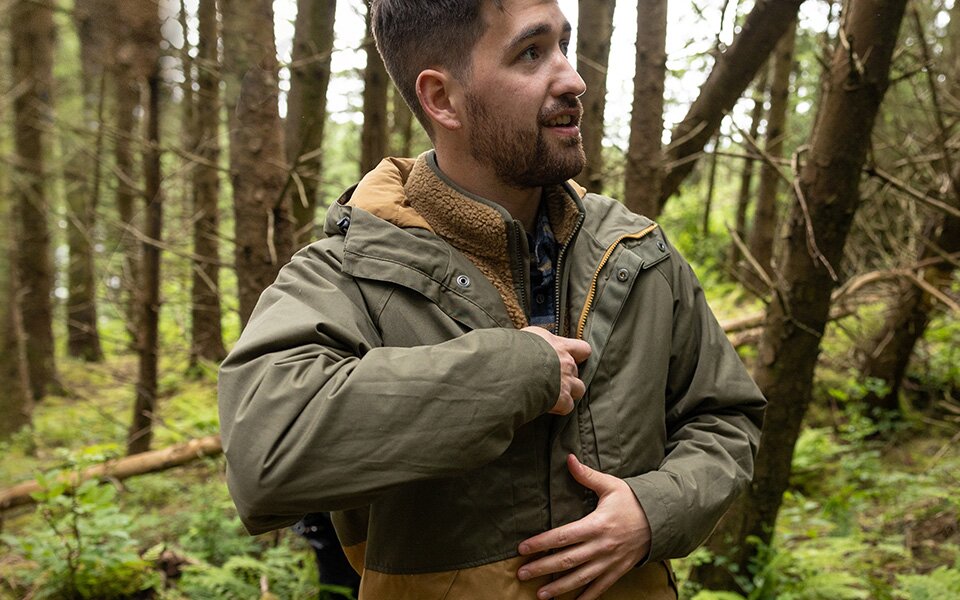What Are Soft Shell Jackets?
Softshell jackets are a type of outerwear designed to offer a balance between warmth, flexibility, and protection from the elements. Unlike traditional hard shell jackets, soft shells are made from materials that prioritise breathability and comfort while providing adequate weather resistance.
Types of Soft Shell Jackets
Not all soft shell jackets are created equal. They come in different styles, each catering to specific activities and conditions.
Lightweight Soft Shells
These soft shell jackets are the go-to choice for high-intensity activities such as trail running, cycling, or aerobic hiking in mild weather. They are engineered to prioritise breathability and flexibility, allowing you to move freely and stay comfortable during strenuous workouts. They feature stretchy materials, often incorporating elastane or spandex, ensuring you have an unrestricted range of motion. While soft shells for high-intensity activities prioritize breathability and flexibility, they also offer adequate protection from light rain and wind. This ensures you remain comfortable and dry in mild and changeable weather conditions.
Midweight Soft Shells
The versatile middle ground – midweight soft shells strike a balance between breathability and weather protection. These jackets are the trusted companions for outdoor enthusiasts engaged in activities like hiking, climbing, and skiing, providing reliable performance across a range of conditions. While midweight soft shells may not be as weather-resistant as hard shell jackets, they still offer commendable protection against moderate weather conditions. Their outer materials are designed to repel light rain, block wind, and resist abrasions. This level of protection makes them suitable for a wide range of outdoor adventures. Midweight soft shells are tailor-made for hiking excursions. They provide insulation to keep you warm during cooler temperatures, while their breathability ensures you don't overheat on the trail. The flexibility of these jackets allows for unrestricted movement as you navigate diverse terrains.
Heavyweight Soft Shells
When venturing into colder and harsher environments, heavyweights come to the rescue. These jackets often incorporate additional insulation and enhanced weather-resistant features. They're perfect for activities like ice climbing or backcountry skiing where you need extra warmth and protection. Some heavyweight soft shells even offer extended coverage, such as longer hems and adjustable cuffs, to keep cold air from creeping in. These design elements are particularly valuable when you're exposed to icy winds and low temperatures. For the coldest environments, heavyweight soft shells can serve as excellent mid-layers beneath a hard shell jacket. This layered approach combines the warmth and insulation of the heavyweight soft shell with the waterproof protection of the hard shell, creating a formidable defense against the elements.
Hooded vs. Non-Hooded
Some soft shell jackets come with hoods, adding an extra layer of protection against wind and rain. Hooded versions are especially useful in unpredictable weather conditions. If you're heading into the mountains or areas with sudden weather changes, consider a hooded soft shell for added versatility.
Benefits of Soft Shell Jackets
Why should you consider investing in a soft shell jacket? Here are some compelling advantages:
Breathability: Soft shells allow moisture and heat to escape, preventing you from feeling sweaty and clammy during physical activities.
Flexibility: The stretchy materials used in soft shells provide excellent freedom of movement, making them ideal for activities like climbing, skiing, or cycling.
Weather Resistance: While not as waterproof as hard shells, soft shells offer sufficient protection against light rain and wind.
Versatility: Soft shell jackets can be worn in a wide range of temperatures and conditions, reducing the need for multiple jackets.
Comfort: Their soft, comfortable feel makes them suitable for all-day wear.
Performance and Features
Layering Compatibility
Soft shell jackets work best as a mid-layer or outer layer in your clothing system. They are designed to be worn over base layers and, if needed, under hard shell jackets for maximum weather protection.
Mid-Layer: In colder weather or during activities that demand additional insulation, soft shells can be worn as mid-layers. Here, they act as a thermal barrier, trapping heat generated by your body. When used as mid-layers, soft shells work in conjunction with base layers (such as moisture-wicking shirts or thermal tops) to keep you warm.
Outer Layer: When conditions are milder or during high-exertion activities, soft shells shine as outer layers. As outer layers, they serve as the first line of defense against the elements. Their outer shell is typically constructed from materials that offer resistance to wind, light rain, and abrasions. Soft shells in this role are worn over base layers and, if necessary, under hard shell jackets for maximum weather protection.
For extreme weather conditions, it's common to use soft shells in tandem with hard shell jackets. The hard shell serves as the ultimate barrier against heavy rain, snow, and strong winds, while the soft shell underneath provides insulation, breathability, and added weather resistance.
Wind Resistance
Soft shell jackets have a remarkable ability to block wind, which is paramount for retaining body heat in cold and blustery conditions. While they may not be entirely windproof like hard shell jackets, they offer a level of wind resistance that strikes a perfect balance between protection and breathability. When the wind picks up, it can rapidly strip away the warm air trapped close to your body. Soft shells act as a protective barrier, preventing this heat loss. This is especially crucial in cold weather when maintaining your core temperature is essential for comfort and safety.
Water Resistance vs. Waterproof
Soft shell jackets are designed to be water-resistant, which means they can effectively repel light rain and snow. However, they are not classified as waterproof. This distinction is vital to grasp, as it directly affects their performance in wet weather. Soft shell jackets can handle light rain showers without issue. The outer materials are treated with durable water repellent (DWR) coatings, which cause water to bead up and roll off the surface. This keeps you dry and comfortable during brief rain spells. They are also adept at handling light to moderate snowfall. Their insulation and moisture-wicking properties help prevent snow from melting and seeping through the fabric.
Practical Considerations
Hiking and Backpacking: Soft shells are excellent choices for hiking and backpacking due to their breathability and flexibility. They also resist condensation buildup inside the jacket, which can be a concern during high-exertion activities.
Sizing and Style: Pay attention to sizing when buying a soft shell jacket. It should fit comfortably without being too tight or too loose. Keep in mind the layers you plan to wear underneath. Soft shell jackets come in various styles, from sleek and minimalist designs to more casual and fashion-forward options.
Related Articles

Let us know you agree to cookies
We use marketing, analytical and functional cookies as well as similar technologies to give you the best experience. Third parties, including social media platforms, often place tracking cookies on our site to show you personalised adverts outside of our website.
We store your cookie preferences for two years and you can edit your preferences via ‘manage cookies’ or through the cookie policy at the bottom of every page. For more information, please see our cookie policy.

